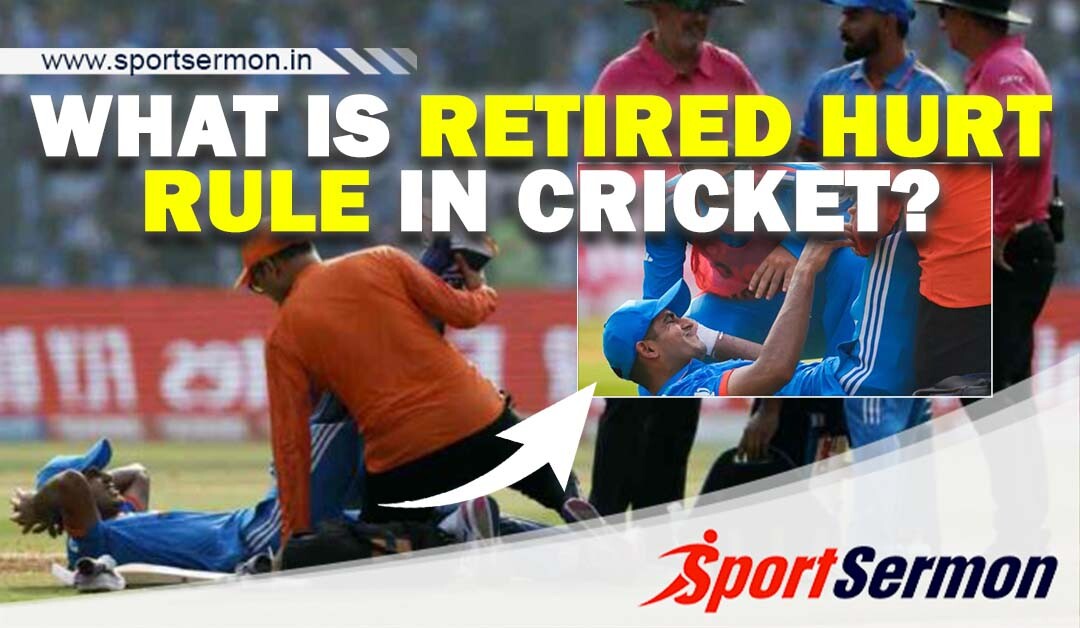In the exciting game of cricket, where clashes are fought with the bat and ball, there is a name that represents not only physical pain but also the players’ mental and emotional toughness – “Retired Hurt.” While it may appear simple, the associations of this word extend beyond the boundary ropes, deep into the invisible problems faced by cricketers as they go through the sport’s difficulties.
Defining the Term: What Does “Retired Hurt” Mean in Cricket?
The term “Retired Hurt” in cricket refers to a player who leaves the field due to injury or illness during their innings. It is not a hurried choice but reflects the physical toll the game may have on those who play. When a batter is declared “Retired Hurt,” it means that they are unable to finish their innings due to a medical condition, but it does not necessarily mean that their involvement in the match is over.
Difference between Retired hurt and Retired out
“Retired hurt” and “Retired out” are terms used in cricket to describe a player leaving the field during a match.
Retired Hurt
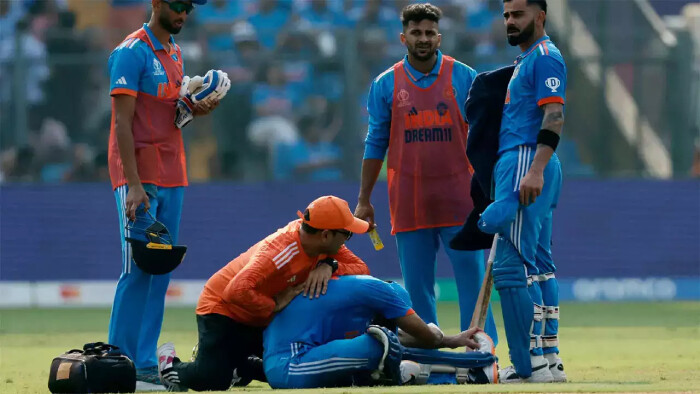
- Reason: A player is referred to as “retired hurt” when they leave the field due to an injury or other physical problem that prevents them from playing anymore.
- Status: If the player recovers from their injury, they will be able to bat later in the innings. The player’s innings are not finished given the temporary retirement.
- Return: If the player can bat again, he or she may restart their innings at the same score as when they were injured.
Retired Out
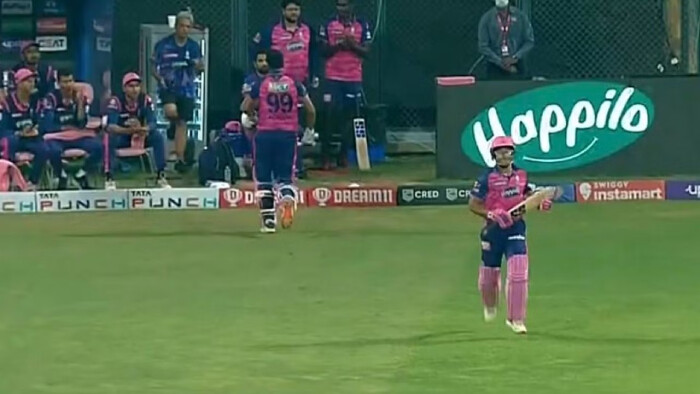
- Reason: A player is referred to as “retired out” when they leave the field freely and without injury or health concern. This could be due to personal reasons, team strategy, or any other non-health-related factor.
- Status: The player’s inning is considered complete in this situation, and they cannot bat again in the same inning.
- Return: If the team bats again, the player can play in the following innings.
The Protocol: Why and How Players Retire Hurt
Cricket has a proven procedure for dealing with injuries and health issues on the field. When a player is injured and unable to play, the umpires, together with team officials and medical professionals, decide to allow the injured player to leave the field temporarily. This decision is critical as it strikes a balance between the necessity for player safety and the competitive spirit of the game.
The batter can obtain medical attention and treatment after being declared “Retired Hurt,” with the hope of returning to the crease later in the innings if declared fit. This rule promotes the players’ well-being while simultaneously acknowledging the unpredictable nature of injuries in a physically demanding sport like cricket.
Rules Governing Retired Hurt
According to cricket regulations, specifically Law 25.4, a batter may withdraw at any moment throughout their innings when the ball is dead. Before play may resume, the umpires must be informed of the reason for the batter’s retirement. If a batter retires due to illness, injury, or any other unavoidable cause (as in 25.4.2), they have the right to continue their innings. If they cannot rejoin work for any reason, they are classified as ‘Retired – not out.’
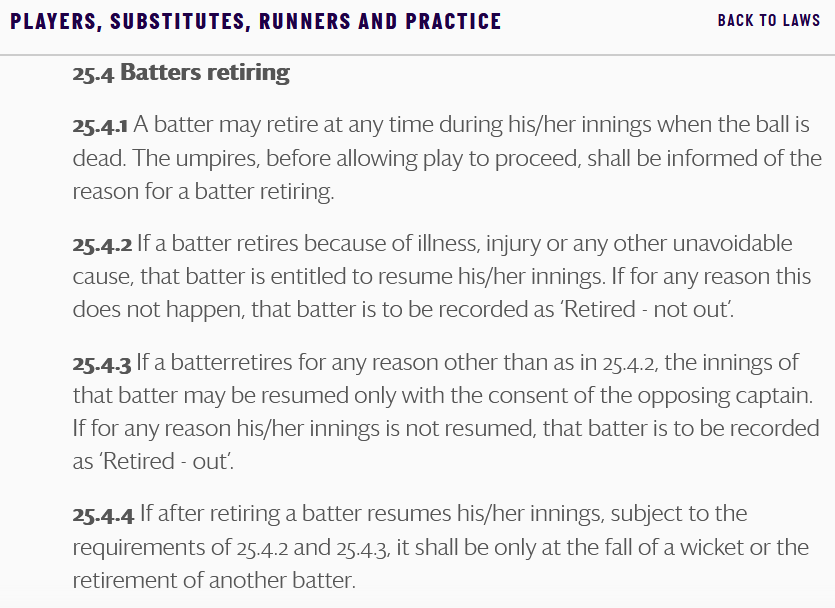
If a batter departs for reasons other than those listed in 25.4.2, the innings must be restarted with the approval of the opposing captain. If the innings are not resumed, the batter is marked as ‘Retired – out.’ Additionally, if a retired batter resumes their innings, it can only happen at the fall of a wicket or the retirement of another batter, as per 25.4.4.
Mental and Emotional Challenges of Retired Hurt
While the term generally refers to a player’s physical condition, there is an obvious mental and emotional battle that takes place when a cricketer becomes “Retired Hurt.” The desire to contribute to the team’s success, along with the frustration of not being able to perform at one’s best, can hurt a player’s mental health.
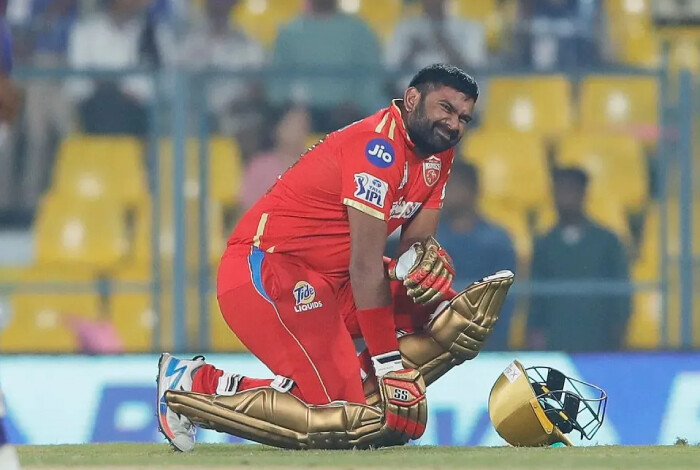
Consider a situation in which a star batter is forced to leave the field due to an injury. The regret of not being able to continue, combined with worry about the severity of the injury, can set off a chain reaction of emotions. The support system offered by teammates, coaches, and medical personnel becomes critical in assisting the player in handling these challenging situations.
Historical Significance: Notable Instances of “Retired Hurt”
There are several instances in cricket history where players, despite being battered and bruised, showed extraordinary determination by returning to the field after being declared “Retired Hurt.” During a 1976 Test match between England and the West Indies, famous West Indian batter Vivian Richards withdrew hurt with a hamstring injury but later recovered to score a century, showing incredible courage and persistence.
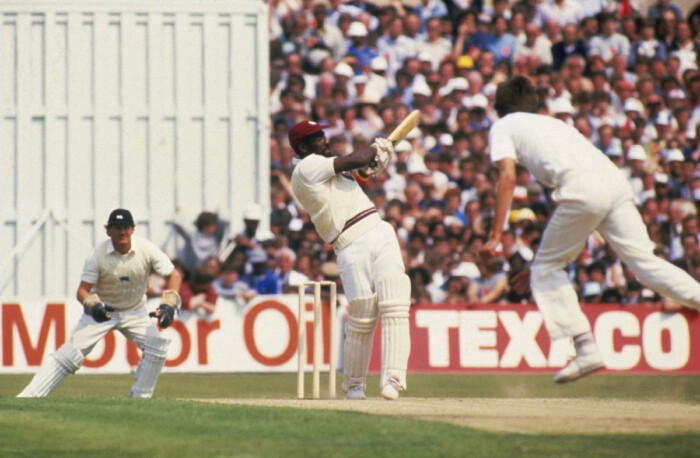
The most recent incident occurred during the crucial World Cup semifinal match against New Zealand, when Shubman Gill displayed his batting prowess with an amazing innings of 79 runs. Gill, on the other hand, got cramps in his left leg in the 23rd over, causing him to retire hurt.
These incidents have a place in cricketing stories, showcasing the unwavering resolve of players who refuse to submit to injury, defining the true meaning of “Retired Hurt.”
The word “Retired Hurt” reflects more than just an indicator on the scoreboard in the complex fabric of cricket. It represents the invisible wars undertaken by cricketers – battles against pain, doubt, and the sport’s rigorous demands. It is a monument to these players’ physical, mental, and emotional toughness, who continue to inspire audiences despite the odds.
Read More: Forgotten Cricketers in Indian Cricket

